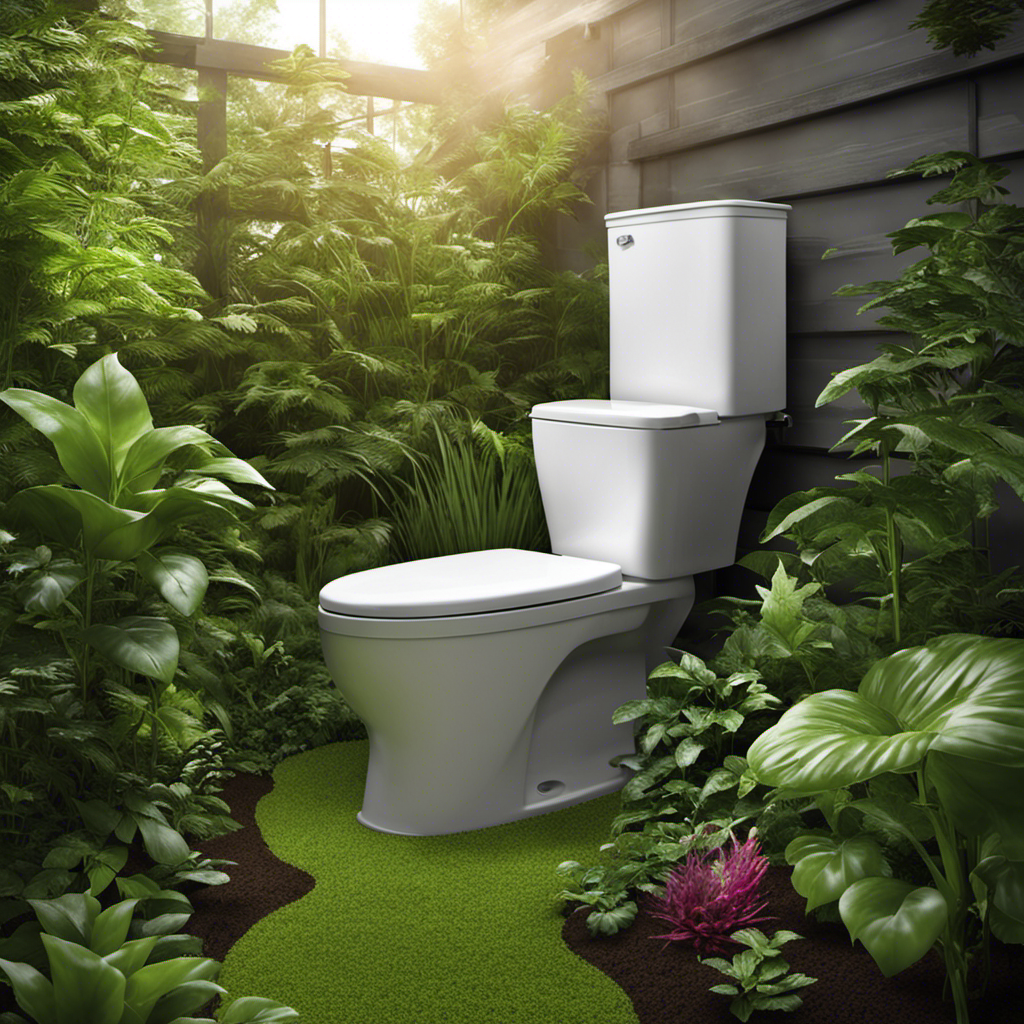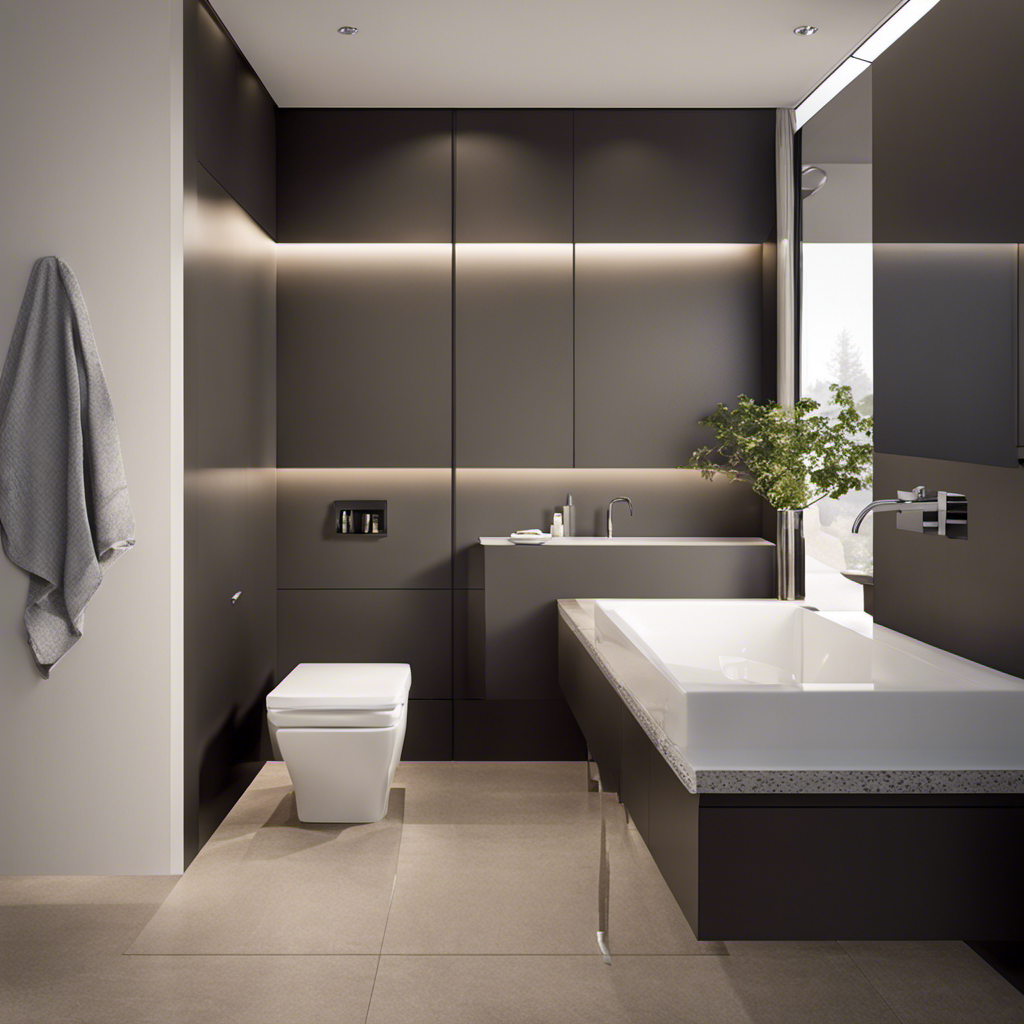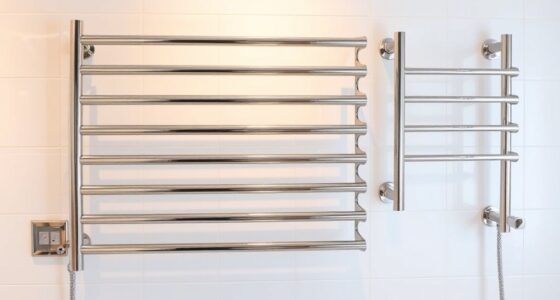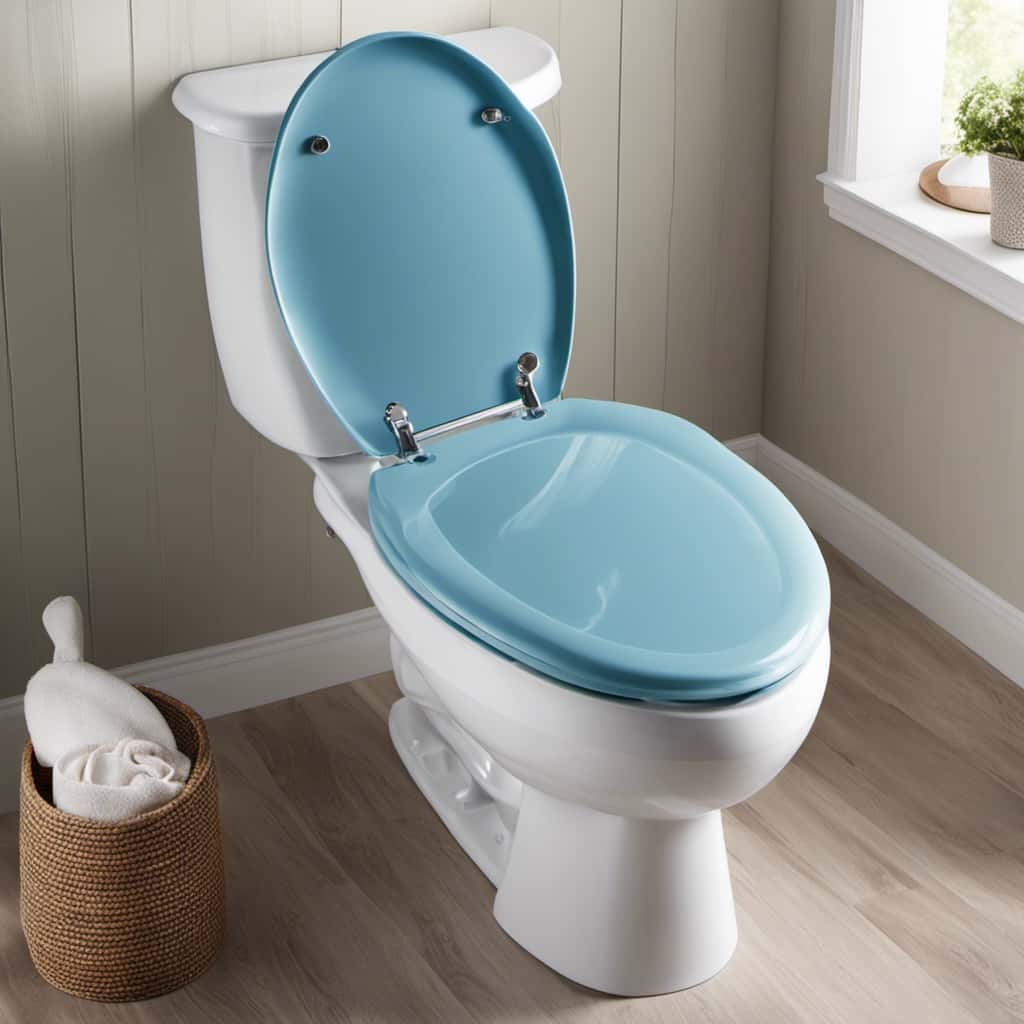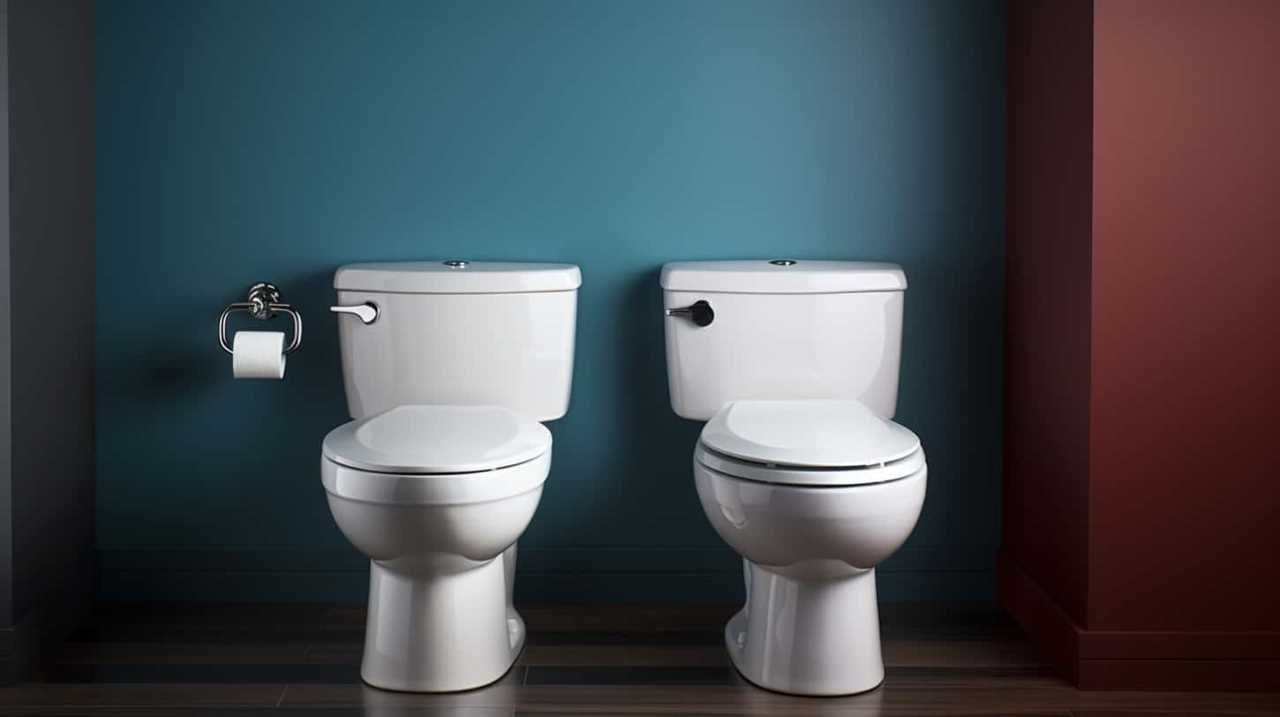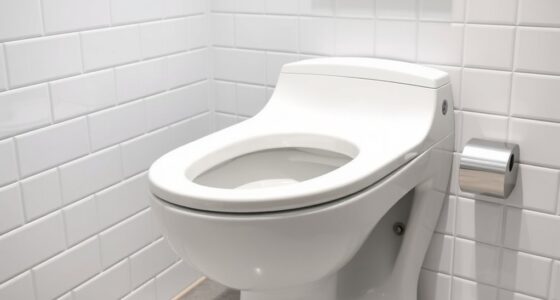I’ve always been passionate about finding eco-friendly solutions for everyday life, and when it comes to waste management, composting toilets have caught my attention. These innovative dry toilets offer a water-saving alternative that separates waste, allowing it to decompose naturally.
Imagine the environmental impact we could make by reducing water usage and eliminating the need for septic tanks or sewer systems. But as with any solution, there are pros and cons to consider.
In this article, we’ll delve into the advantages and disadvantages of composting toilets, explore how to manage potential odor issues, and discuss important factors to consider before installation.
Key Takeaways
- Composting toilets are water savers, as they do not use any water for flushing.
- They are environmentally friendly, providing natural fertilizers and eliminating the need for centralized sewage treatment plants.
- Composting toilets are easy to install and cost less than traditional toilets.
- Proper maintenance is essential to prevent unpleasant odors in composting toilets.
Advantages of Composting Toilets
I love that composting toilets are environmentally friendly, providing natural fertilizers and eliminating the need for centralized sewage treatment plants.
When it comes to composting toilet installation, it is important to be aware of composting toilet regulations in your area. Before installing a composting toilet, it is crucial to check local regulations and obtain any necessary permits. Different regions may have specific requirements for the installation of composting toilets to ensure proper waste management and prevent any potential health hazards.
By following these regulations, you can ensure that your composting toilet is installed correctly and safely.
Composting toilets offer a sustainable and cost-effective solution for waste management, and by adhering to the regulations, you can enjoy the benefits while also contributing to a cleaner and healthier environment.
Disadvantages of Composting Toilets
Regular maintenance and proper ventilation are crucial in minimizing odor issues with composting toilets. While composting toilets offer numerous benefits, there are some drawbacks and challenges in their use.
One of the main drawbacks is the potential for odor issues if not properly maintained. Inadequate separation of solid and liquid waste can lead to the formation of unpleasant odors during decomposition. However, these odor issues can be controlled with regular maintenance and the use of carbon additives.
Another challenge is the unfamiliarity some guests may have with composting toilets, which may make them hesitant to use them. Additionally, certain composting toilets require electricity to operate, which can offset the environmental and financial savings.
It is important to consider these drawbacks and challenges when deciding to install a composting toilet.
Managing Odor Issues in Composting Toilets
Proper maintenance and the use of carbon additives are key to controlling odor issues in composting toilets.
Regular cleaning and removal of solid waste prevent the accumulation of odor-causing bacteria.
Adding carbon-rich materials, such as sawdust or coconut coir, after each use helps absorb moisture and neutralize odors.
Ensuring proper ventilation and airflow in the composting toilet system reduces the buildup of unpleasant smells.
Effective odor control in composting toilets is crucial for maintaining a pleasant environment and ensuring user satisfaction. By following a regular maintenance routine and incorporating carbon additives, the decomposition process can be optimized, minimizing the risk of odor issues.
Additionally, proper ventilation helps to remove any lingering smells, providing a more pleasant experience for users. Taking these steps will help ensure the successful and odor-free operation of composting toilets.
Factors to Consider Before Installing a Composting Toilet
Before installing a composting toilet, it’s important to research and understand the local regulations and necessary permits.
The installation process for a composting toilet differs from traditional toilets in several ways.
Firstly, composting toilets don’t require a connection to a septic tank or sewer system. Instead, they separate liquid and solid waste, allowing them to decompose and dry out. Carbon additives, like peat moss, are often used to aid in decomposition and reduce odors.
Secondly, composting toilets can be installed anywhere without the need for a water connection, making them versatile and space-saving. In comparison, traditional toilets require plumbing and a connection to a sewage system.
Additionally, composting toilets are easy to install and generally cost less than traditional toilets.
Overall, understanding the installation process and comparing it with traditional toilets is crucial before deciding to install a composting toilet.
Environmental Benefits of Composting Toilets
I find it fascinating how composting toilets contribute to preserving the environment by reducing water usage and eliminating the need for centralized sewage treatment plants.
- Composting toilets reduce water usage by eliminating the need for flushing, which can save thousands of gallons of water per year.
- These toilets also eliminate the need for centralized sewage treatment plants, reducing the energy and resources required for wastewater treatment.
Composting toilet regulations vary by location, so it is important to check local regulations and obtain any necessary permits before installation.
When installing a composting toilet, consider the following tips:
- Research different types and models to find the best fit for your needs and space requirements.
- Assess the availability of electricity, as some composting toilets require it for certain functions.
- Understand the maintenance requirements and costs associated with owning a composting toilet to ensure proper operation and odor control.
Cost and Maintenance Considerations for Composting Toilets
Installing and maintaining a composting toilet involves considering the upfront cost, ongoing maintenance requirements, and potential savings in water and sewage fees. Composting toilet installation typically costs between $1,000 and $2,500, depending on the type and features of the toilet. However, the long-term savings can be significant. By eliminating the need for water flushing and reducing sewage fees, composting toilets can save homeowners hundreds of dollars each year. In terms of maintenance, composting toilets require regular emptying and occasional addition of carbon additives. The frequency of emptying depends on the size of the toilet and the number of users. On average, a composting toilet needs to be emptied every 2-3 months. With proper maintenance, composting toilets can operate efficiently and odor-free for many years.
| Cost | Maintenance | |
|---|---|---|
| Upfront Cost | $1,000 – $2,500 | – |
| Ongoing Maintenance | – | Regular emptying every 2-3 months |
| Potential Savings | Save on water and sewage fees | – |
Frequently Asked Questions
Are Composting Toilets Legal in All Areas?
Composting toilets’ legality and regulations vary by area. It’s important to check local regulations and obtain any necessary permits before installing one. Compliance with local laws ensures the proper and legal use of composting toilets.
Can Composting Toilets Be Used in Residential Homes?
Yes, composting toilets can be used in residential homes. They offer benefits in urban areas with water savings and environmentally friendly waste management. They are especially useful in remote locations without access to centralized sewage treatment plants.
How Often Do Composting Toilets Need to Be Emptied?
Composting toilets need to be emptied regularly, depending on usage and capacity. Proper maintenance, including efficient separation of waste and the use of carbon additives, helps control odors and ensures optimal performance.
Are Composting Toilets Suitable for Large Families or High-Traffic Areas?
Composting toilets may not be suitable for large families or high-traffic areas due to the need for frequent maintenance. However, they offer significant benefits for the environment, such as water savings and natural fertilizers.
Can Composting Toilets Be Used in Cold Climates?
Yes, composting toilets can be used in cold climates. However, the maintenance of composting toilets in cold weather may require additional precautions to ensure proper decomposition and prevent freezing.
Conclusion
In conclusion, composting toilets offer a practical and environmentally friendly waste solution. They save water, space, and money, making them a viable option for off-grid homes and remote locations.
While there are some drawbacks, such as potential odor issues and the need for electricity, proper maintenance and ventilation can help address these concerns.
Before installing a composting toilet, it is crucial to consider local regulations, assess space requirements, and research different models.
Overall, composting toilets provide a sustainable alternative that promotes a greener future. So why not embrace this eco-friendly option and contribute to a healthier planet?
